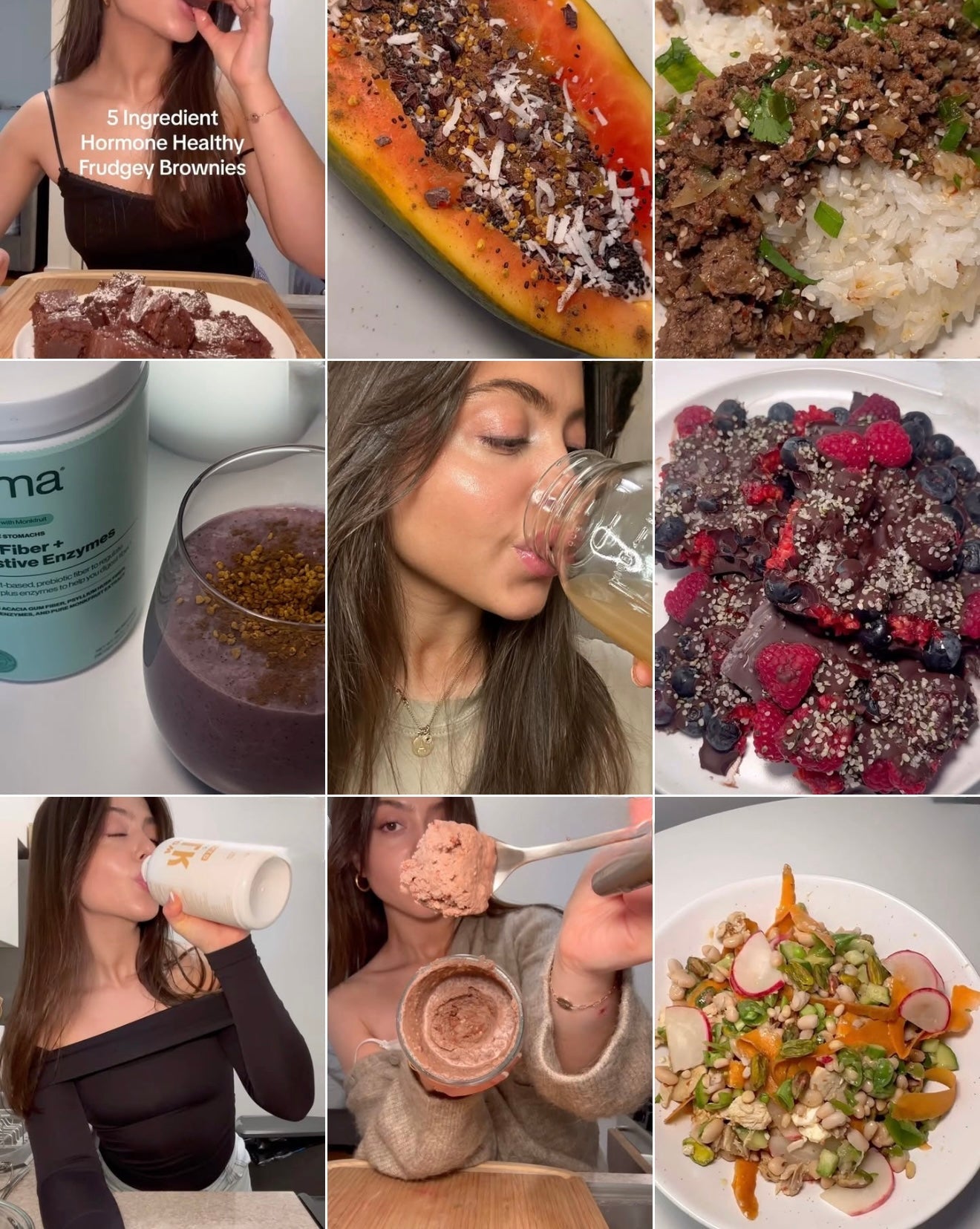I didn’t always call the grocery store my favorite...
It used to trigger everything from body image noise to decision fatigue to budget guilt.
Eventually, I realized grocery overwhelm isn’t just common, it’s a sign of something deeper: a disconnect between how we want to feel and how we’re actually trying to get there.
These days, it feels completely different. Grocery shopping has become one of the most tangible ways I support my nervous system, digestion, hormones, and the flow of my week. And I’ve learned that how you shop matters just as much as what you buy.
Start with Structure, Not Stress
If you’re feeling overwhelmed, this is my first rule: simplify your categories.
Each week I build my cart around:
-
2 proteins (ex: ground beef, turkey burgers, or organic chicken)
-
2 veggies I love + 1 I rarely eat (new colors = new phytonutrients)
-
1 complex carb (sweet potato, rice, or quinoa, which are usually already stocked in my pantry)
-
Healthy fats (avocados, tahini, nuts)
-
Flavor boosters (sauces, kraut, herbs, broths)
If I’m feeling low-capacity or just got back from a trip, I’ll pick two easy recipes and build my list around those. Worst case scenario? I leave with two guaranteed meals I’m excited about.
Bonus tip: write your list on paper. A handwritten note keeps you present.
Label Reading
I get a lot of questions about what I actually look for on labels. Here's my shorthand:
-
Short ingredient lists
-
Fats I trust (olive, avocado, coconut – no seed oils)
-
Low in added sugar and artificial sweeteners
-
Recognizable words (If my great-grandma wouldn’t recognize it, I would think twice.)
Not every product has to be perfect. But the pattern matters.
If 90% of your cart contains ingredients you can pronounce and digest well, the other 10% can typically include a little more flexibility.
The Freezer & Pantry Are Your Friends
I used to ignore the freezer aisle like it was where nutrition went to die. Now?
It’s a lifeline.
Stocking up on:
-
Frozen veggies (no waste, lower cost)
-
Frozen fruit for yogurt bowls and smoothies
-
Sausages, burger patties, or rotisserie chicken for fast protein
-
Tinned fish, bone broth, canned beans, quinoa, rice
…means I always have a backup plan when I can’t shop again for a while.
Frozen blueberries even increase their antioxidant content (shoutout anthocyanins), so don’t sleep on your freezer.
Little Things That Make It Way Better
Some days the store still feels overstimulating.
Here’s what I do when that happens:
-
Bring a warm drink – A comfort beverage literally calms your nervous system
-
Pop on headphones – I have a playlist just for grocery runs
-
Avoid peak hours – Early mornings = less chaos
-
Pick ingredients, not just meals – Grab basics you can mix and match
-
Reward yourself – Whether it’s your favorite snack or a FaceTime catch-up on the walk home, closing the loop matters
Intention Over Hype
You don’t need every trending wellness food to eat well.
90% of the time, I skip the superfood powders and go back to basics:
Protein. Color. Fiber. A healthy fat. Something that makes it taste good.
Before buying something new, I ask:
-
Will I actually eat this next week?
-
Does this support how I want to feel?
Grocery shopping doesn’t have to be a test.
It can be a practice—a way to gently remind your body:
“We’re safe. We’re supported. We’ve got what we need.”
You’ll Know It’s Working When:
-
Your fridge doesn’t feel like a mystery box
-
You feel more nourished and less reactive
-
Cooking feels approachable—even exciting
-
You stop asking, “WTF do I eat?” every night at 8pm
Because at the end of the day, the grocery store doesn’t have to be a chore—
it can be a space where you connect with your body and map your healing.
By: Ale Lubezki | Holistic Health Coach



